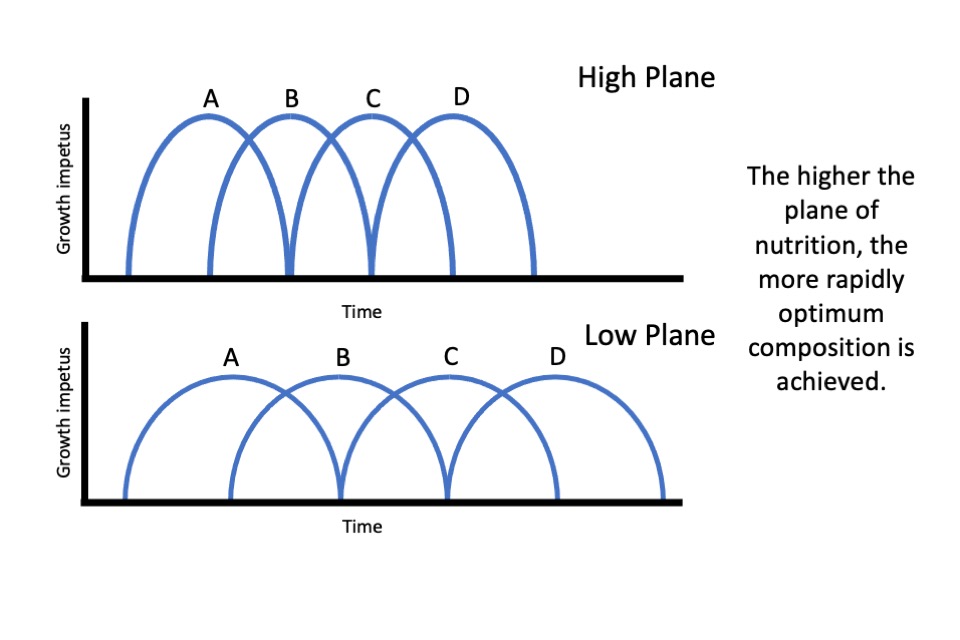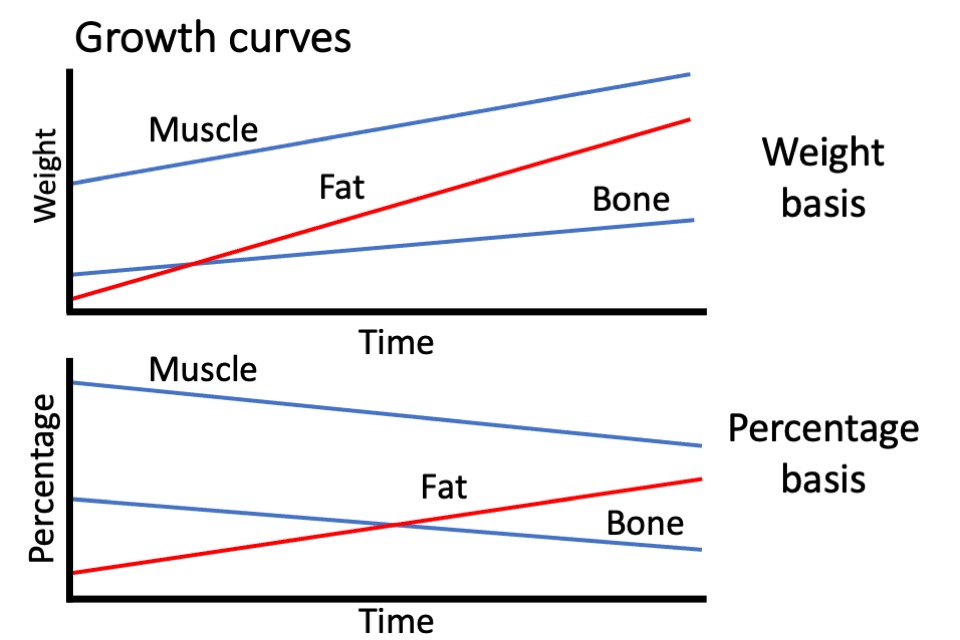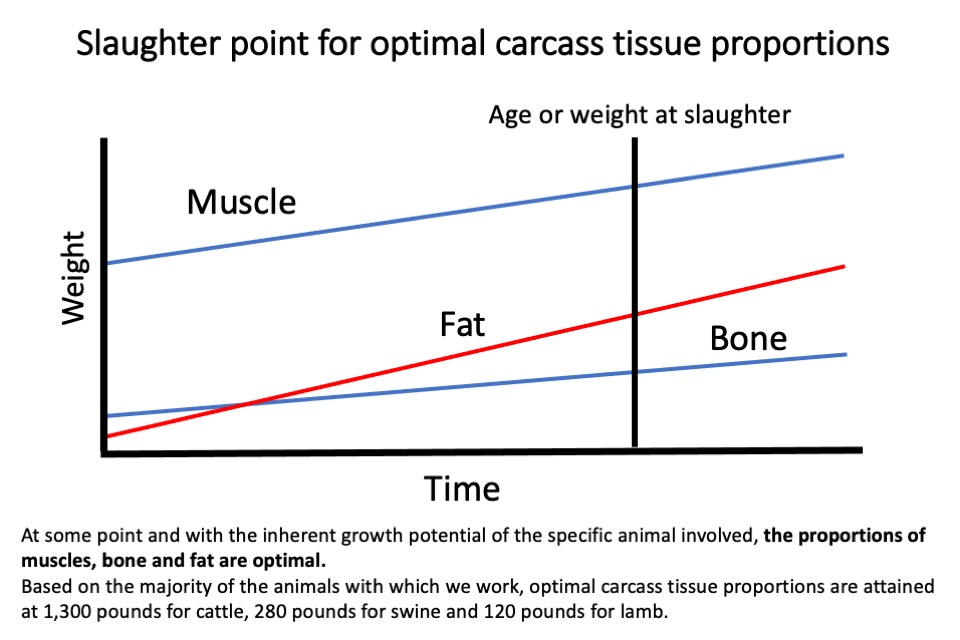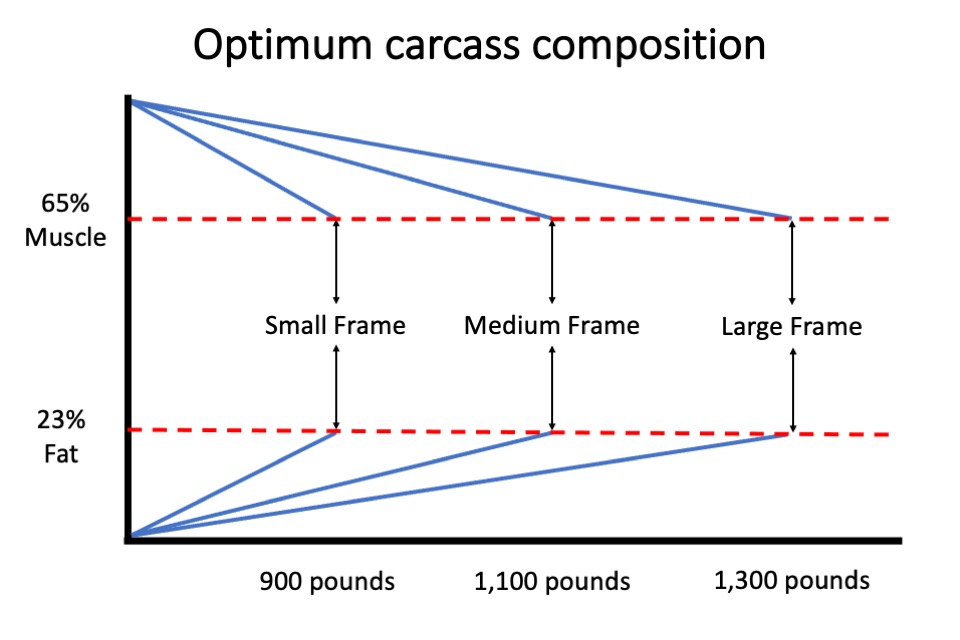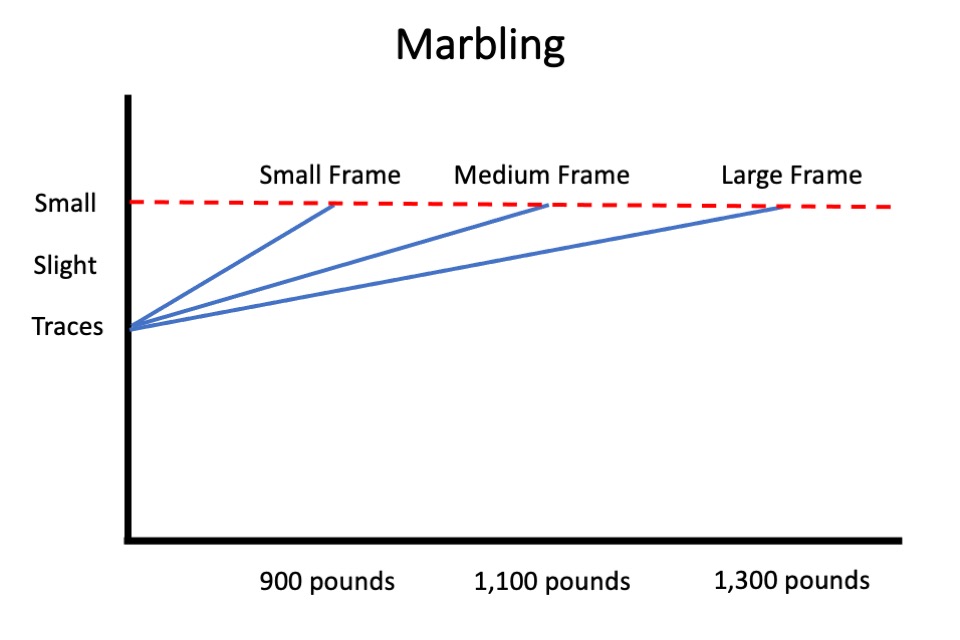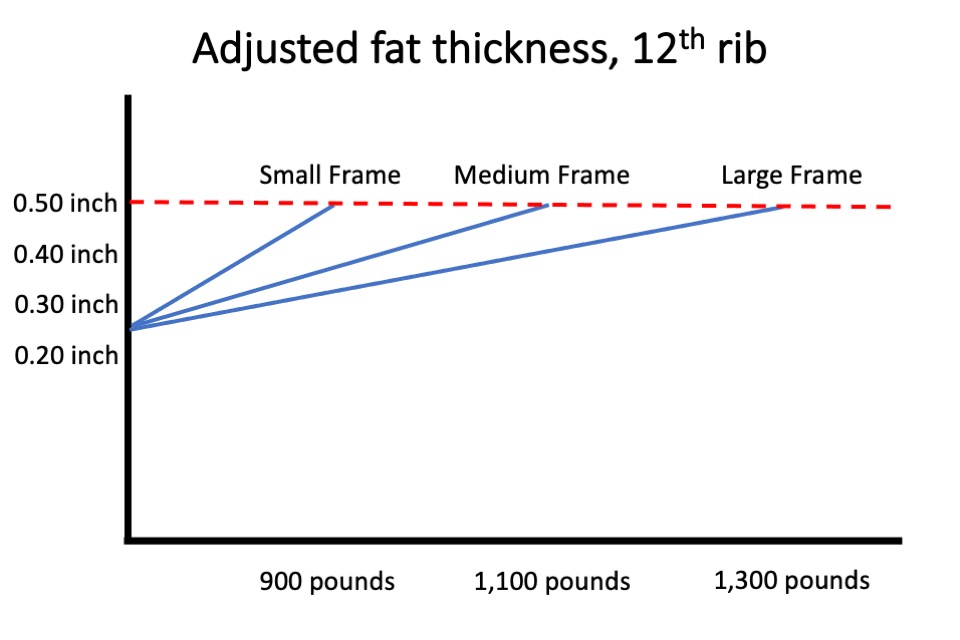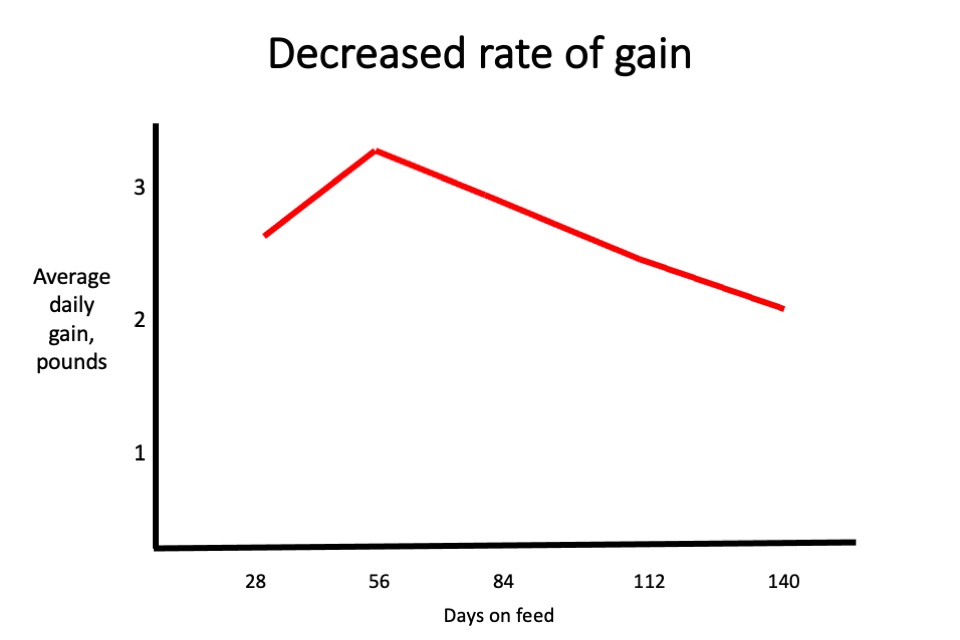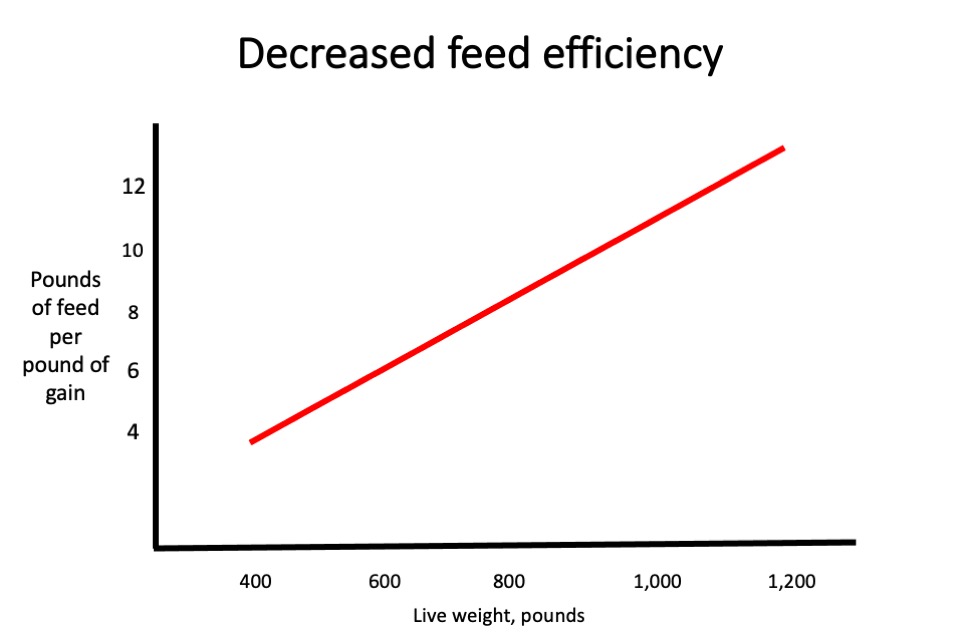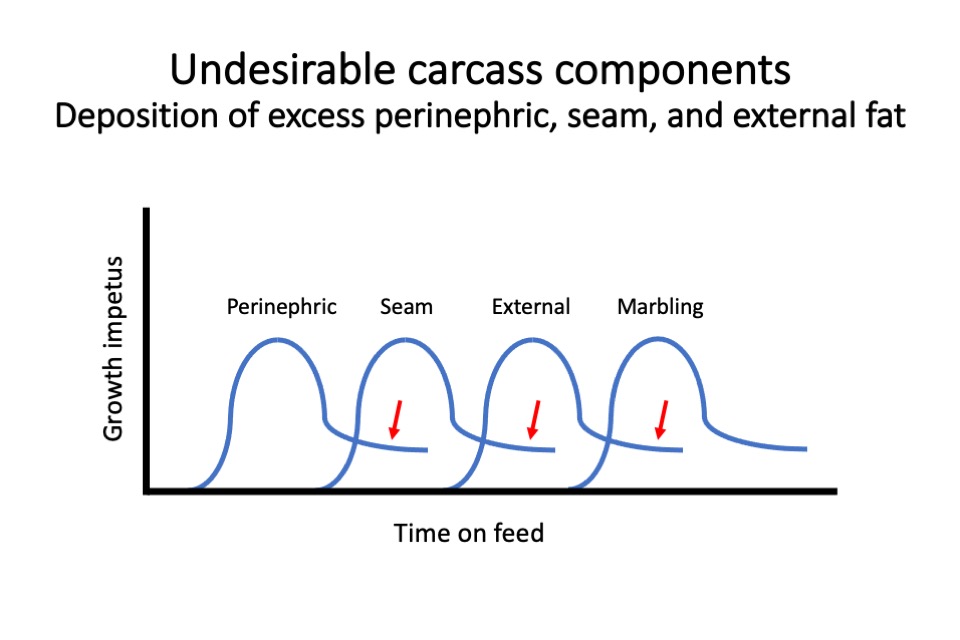Objectives:
(1) To discuss how to produce a desirable carcass by full feeding, marketing livestock when ready and not holding for excessive periods before slaughter.
(2) To show how the priority of nutrient utilization determines where growth and development will take place.
(3) To demonstrate the importance of using growth curves to determine the optimum composition of livestock slaughtered.
Reading material: Principles of Meat Science (4th Ed.), chapter 3, pages 60 to 67.
To produce a desirable carcass:
Full feed
Market when ready
Do not hold
Full feed
Why full feed? Well-bred animals with high inherent potential for growth will produce most efficiently on a full feeding program (high plane of nutrition).
Priority of nutrient utilization (tissues with the greatest importance to life are first priority):
- Highest priority
- Middle priority
- Low middle priority
- Lowest priority
| Tissue | Body area | Fat depot |
| (A) Nervous | (A) Head | (A) Perinephric |
| (B) Skeletal | (B) Neck and shoulder | (B) Intermuscular |
| (C) Muscle | (C) Hind limb | (C) Subcutaneous |
| (D) Fat | (D) Rib and loin | (D) Intramuscular |
Market when ready
At some point and with the inherent growth potential of the specific animal involved, the proportions of muscles, bone and fat are optimal.
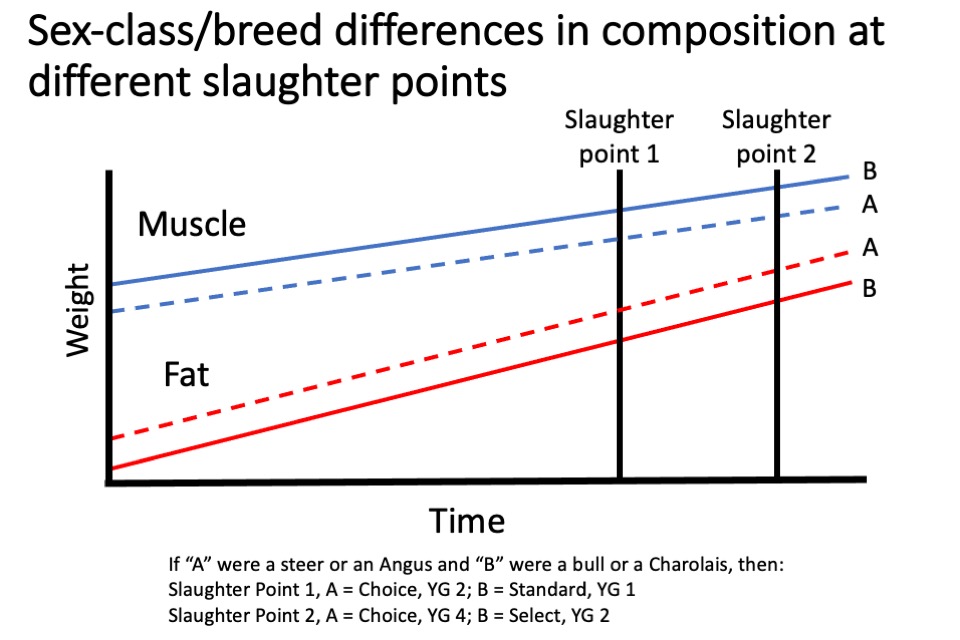
Obviously, optimal weight or age at which to slaughter market animals differs among sex classes and among breeds: Steers versus heifers, steers versus bulls, Charolais versus Angus, Chianina versus Shorthorn, etc. This is primarily a difference in composition caused by either hormonal activity or by frame size and maturity.
Do not hold
What happens if we allow the animal to go beyond the point in weight at which it would produce the optimal carcass composition?
- Decreased rate of gain
- Decreased feed efficiency
- Undesirable carcass composition
Review of Material — What the student should know:
(1) The influence of full feeding on achievement of optimum body composition.
(2) Optimum body composition and the factors that influence it.
(3) Why overfeeding is a problem in the beef industry.
J.W. Savell, updated March 28, 2021
Links to related sites on the Internet
